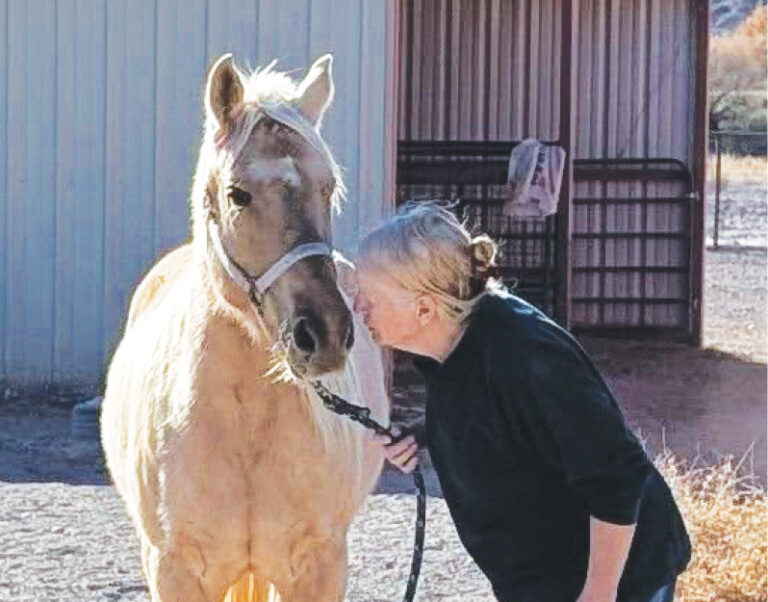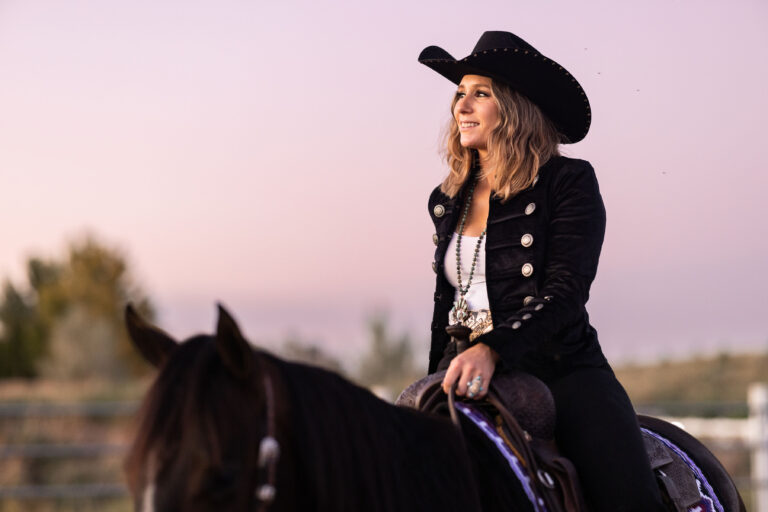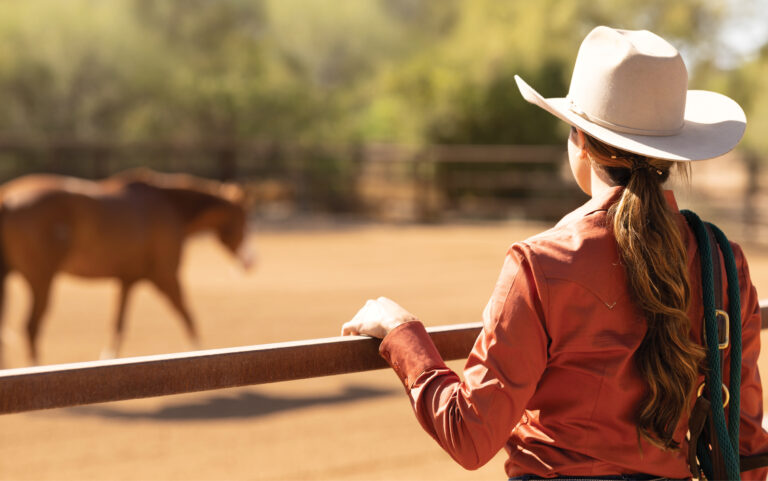Montana’s Bob Marshall Wilderness Complex, known as the “crown jewel” of American wilderness, is a trail-riding paradise. This wilderness area—which ranges in elevation between 4,000 to 9,000 feet above sea level—is interwoven with tumbling waterfalls, rushing rivers, and clear, frigid lakes. Mountain peaks pierce the sky, and lush meadows blanket open areas, while thick patches of old-growth forest provide shelter for wolves, grizzly bears, black bears, cougars, lynx, moose, elk, and deer. Mountain goats and bighorn sheep can often be seen near mountain trails.

Affectionately called the “Bob,” this vast wilderness area runs along both sides of the Continental Divide approximately 60 miles west of Great Falls. The 1.5-million-acre complex is actually made up of the Bob Marshall, Scapegoat, Great Bear wildernesses. Four hundred miles of road cirvcumvent the wilderness. Only trail riders, hikers, and animals can travel within this land where silence may be broken only by bird calls, howling wolves, and your horse’s footfalls.
Bob Marshall, the man whose legacy was the preservation of this grand wilderness, was born in New York City in 1901. A scientist with a PhD degree in plant physiology, he was forester, writer, and wilderness activist. He was a principal founder of the Wilderness Society, formed in 1935 to protect large tracts of wilderness from road development and exploitation. He died when he was just 38 years old.
Marshall felt passionately that experiencing wilderness was important for all of us. As he once wrote, “In a civilization which requires most lives to be passed amid inordinate dissonance, pressure, and intrusion, the chance of retiring now and then to the quietude and privacy of sylvan haunts becomes for some people a psychic necessity.”
A Taste of the Bob
For a taste of the Bob, an excellent choice is Benchmark, which is situated on the eastern side of the wilderness complex. Here, you’ll camp and ride in a wilderness setting adjacent to the Bob Marshall Wilderness boundary.
To reach this camping area and trailhead, you must travel 32 miles of dirt road from Augusta, Montana. A major wilderness access, this road is usually in good condition. It took us about an hour and a half to pull our living-quarters trailer down the road to Benchmark.
Shortly after Benchmark Wilderness Ranch, you’ll see the road to Benchmark Campground and Straight Creek Trail on the left. This is the most spacious campground; however, to water your horse, you’ll need to pump water by hand, and the two pumps are located some distance from the feed bunks. Also, they’re not threaded, so you can’t connect a hose and turn on the water. You must pump the water out.
Continue on the main road and you’ll see an overflow camp on the right. Next to it is an outfitter’s corral and a stream. This is the trailhead for Trail #256. A little farther down is the South Fork Sun River Campground and the end of the road. We camped here and had close access to several trails.

This camp offers feed bunks with hitching rails, but no corrals. We brought a portable corral so the horses could move around and rest after a ride. The camp also has one unthreaded hand pump for water. To save work and time, plan on bringing all the horse water you can. We had a 65-gallon tank in the back of the truck and a 25-gallon tank in the trailer.
Read More: Explore This Desert Destination
Wilderness Rides
There were five rides in the vicinity of our camp. For our first ride, we chose Fairview Creek Trail #204, which was farthest from camp. One can ride on a connecting trail that follows the road to the trailhead. We elected to trailer our horses down and park across from the Benchmark Wilderness Ranch. The trailhead is just north of the ranch.
The beginning of the ride follows a good trail for about 4 miles through a forested valley with an 800-foot elevation gain to a junction. We rode through forests of lodgepole pine, fir, and spruce. One may continue left at the junction and ride about 2½ miles to the small Renshaw Lake. We chose to turn right and rode onto Fairview Plateau with rippling meadows and towering mountains rising more than 8,000 feet in elevation. This was a good trail, but the farther we rode, the more brushed-in it became. Finally, we decided to call it quits and turned around.
Our remaining rides were all from camp. Next, we rode the Straight Creek Trail #212. To access this trailhead, we rode on the Administration Trail out of the southeast portion of camp, across the road, past the outfitter corrals. We followed the road about a quarter of a mile to the turnoff for Benchmark Campground and Straight Creek Trailhead. The campground is to the left; continue straight to the trailhead.

Straight Creek lives up to its name following the valley southeast in a fairly straight fashion. This is mostly a forested valley with limited views. Watch ahead for oncoming riders. There are some narrow stretches on steep side hills. As luck would have it, we met outfitters riding in as we were riding out. The first group of riders were the outfitters and their guests. They told us the pack string was coming behind them. There wasn’t room to pass other horses on the steep side hill, so we waited 30 minutes for the pack string to come along. After they passed, we hurriedly crossed that skinny portion of trail.
Our third ride was on the famed Continental Divide Trail South #202 along the South Fork of the Sun River. The trailhead is at the north end of the South Fork of Sun River Campground at the end of the road. After a half mile, a wooden bridge crosses the frothy, swirling South Fork of Sun River that runs in a canyon far below. This makes for an exciting entrance into the wilderness. After crossing the bridge, turn left on the Continental Divide Trail South.
Before crossing the river, one point of interest is a short side trail to the right going to Dr. Kenck’s Cabin. This is worth a short visit. The cabin was built in 1924 on a bank overlooking the valley. You can rent this cabin overnight. However, there’s no electricity, and you can’t keep horses here.
After turning left and following the Continental Divide Trail South, we found it was much like the Straight Creek Trail; that is, mostly forested with limited views. This would be a cool trail on a hot summer day.
On this ride, we met an outfitter with a string of horses and riders from the Benchmark Wilderness Ranch. They were traveling 20 miles to Big Prairie.
We met some interesting folks doing their own pack trips into the Bob. We met a father-daughter team where the dad was passing on his love and knowledge of horse packing to an enthusiastic teenage daughter. Then there were the Baby Boomer gals! One of these women was in her 60s; the other two were in their mid-70s. They were long time packers, and unwilling to let age and aches keep them from doing what they love.

Whether they were seasoned veteran packers or newbies, they all had one thing in common: an aura of happy expectation and excitement.
We didn’t do the fourth ride, but it merits mentioning because our friends tell us it’s quite pretty. That is Trail #256 located behind the overflow area. Be aware that in the first 4 or 5 miles of this ride, the trail gains 2,100 feet.
For us, the premier ride was to Pretty Prairie Ranger Station, a 13.2-mile round trip from the South Fork Sun River Campground. You ride the same trail as before, going north from camp and across the bridge over the river. However, once across, turn right instead of left for Continental Divide Trail North #202.
If you only have time for one ride, this is it. Below 9,000-foot mountain peaks supporting a cobalt-blue sky, you’ll wend through cool forests, with only the sound of crystal streams and bird calls breaking the silence.
About 4 miles in, you’ll come to a “low-water route” junction to Pretty Prairie Ranger Station. We took this route because we knew the water was low. But be careful. High-water crossings can be dangerous. A friend crossed this same area earlier in the season, and his mule was swept sideways into the river. Our friend broke a leg and had to be airlifted out. If there’s any concern, you may turn left for a longer route that has a bridge crossing over the West Fork. After the bridge crossing, turn right.
We encountered three water crossings after which we came into the western end of the extensive grass-and-flower-filled Pretty Prairie. There’s no marked trail to the ranger station. Shortly after entering the prairie, look to the southwest corner of the prairie. Work your way in that direction, and you should find it.
The historic ranger station is snuggled in a picturesque setting and even has a hitching rail. You can’t camp here, but what a great place for lunch with a view! You can camp anywhere else in the valley.
Packing In
If you’re an intrepid trail rider looking for adventure, then taking a pack trip into the Bob Marshall wilderness may be your dream come true. You can use a reputable outfitter, or you can do it yourself.
We’ve gone on several pack trips here. Our favorite one was from the Benchmark Trailhead around the famed China Wall, a distinctive 22-mile-long escarpment that rises 1,000 feet and can be seen for miles.
We each had our saddle horse and one pack horse. Our trip was 11 days in the wilderness, so we packed light. We left the Benchmark Trailhead and headed up the West Fork of the Sun River, then north along the China Wall to Larch Hill Pass. The view of the wall takes your breath away!
From Larch Hill Pass, we rode down the White River to the South Fork of the Flathead River to White River Park. Here was a stately grove of more than 100-year-old white pine trees surrounded by deep, green grass. Next, we went over White River Pass and back to our starting point.

Before you tackle the Bob on your own, consider getting to know the area with an experienced outfitter. Here are two we recommend.
The Benchmark Wilderness Ranch (benchmarkwildernessranch.com), located at the start of the Benchmark camping area, is surrounded by the majesty of the Bob Marshall Wilderness. Situated at 5,300-foot elevation, the ranch can accommodate 35 guests. It’s open from June to November with a two-night minimum stay.
Their business is helping people to enjoy the Bob; they have this down to a fine art. The ranch’s pack trips are typically five to seven days long and explore different areas of the Bob, depending on the guests’ interests. A guide, camp cook, and a couple of horse wranglers accompany the guests. They do all the work so guests can have a memorable time riding the Bob.
Cheff Legacy Outfitters (chefflegacyoutfittersmt.com) will take you on a pack trip on the western side of the Bob. Like the Benchmark Wilderness Ranch, this is a multigenerational, family-run outfit. They know what they’re doing. You’ll need only a sleeping bag, your personal items, and seven days. Pack trips take groups of five to seven riders and are a week long.
We asked Ashtin Courville with Legacy Outfitters to share his thoughts on what it was like going into the wilderness. “Life is a lot more simple 30 miles back in the wilderness,” he answered with a smile. “To me, packing and guiding has been the best thing I’ve ever had the opportunity of doing. I encourage everyone to experience the Bob Marshall at least once in their lifetime.”






